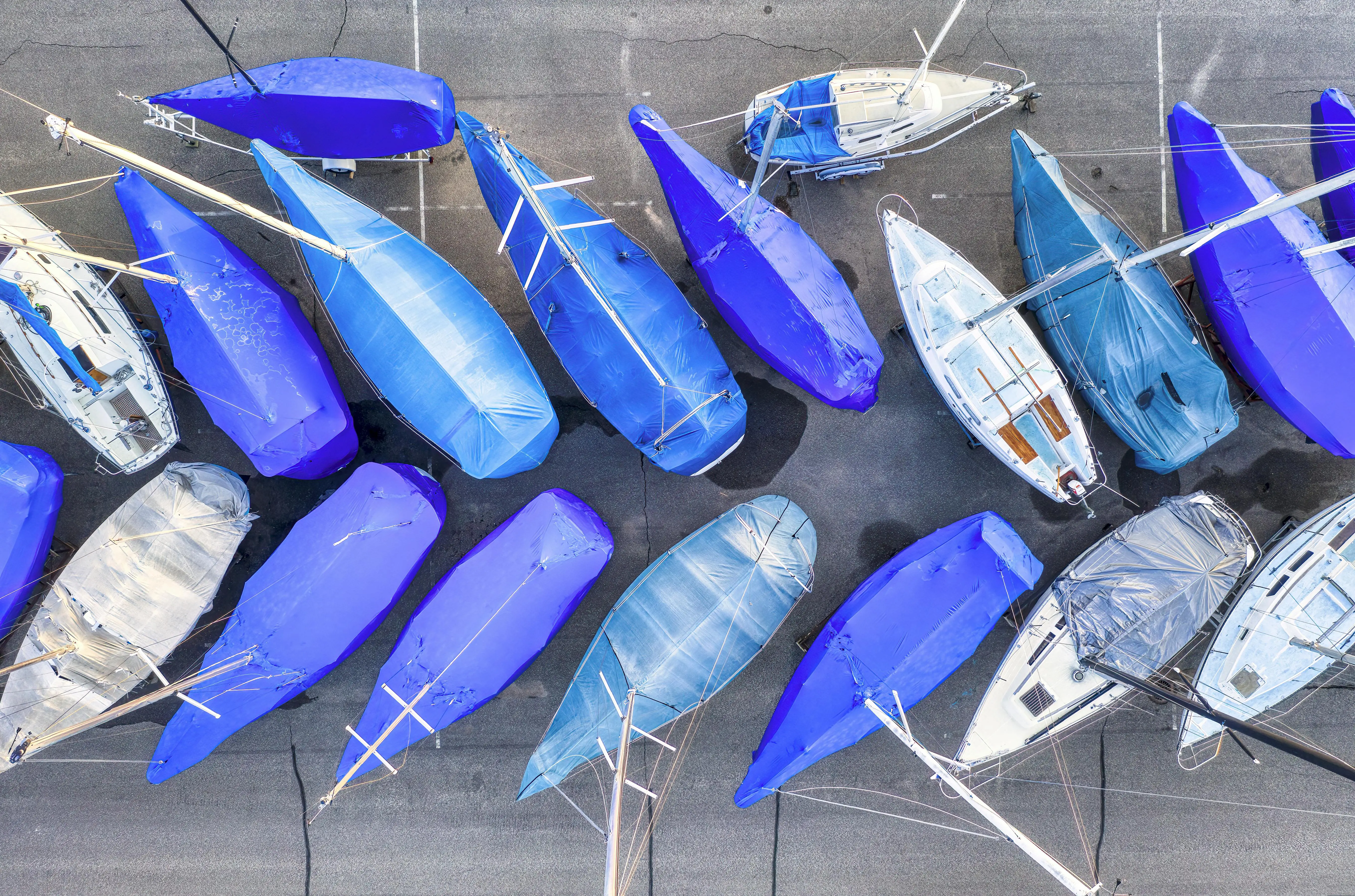To Shrink-Wrap or To Tarp? The Pros and Cons for a Regina Winter
—
September 12th, 2025

As the leaves turn golden along Wascana Centre and the crisp autumn air signals the end of another beautiful Saskatchewan summer, boat and RV owners across Southern Regina are faced with a familiar dilemma: how to best protect their prized possessions from the impending harsh winter. The warm, dry summers quickly give way to cold, dry winters with average temperatures that can plummet to a bone-chilling -11°C. With significant temperature swings and an average of 398 mm of precipitation to contend with, properly winterizing your boat or RV isn't just a suggestion; it's a necessity. The two most popular methods for protecting your investment are shrink-wrapping and tarping. But which one is right for you? Let's break down the pros and cons of each.
The Case for Shrink-Wrapping: A Fortress for Your prized possession
For those who prefer a "set it and forget it" approach to winter storage, shrink-wrapping is the gold standard. This method involves covering your boat or RV with a heavy-duty, waterproof plastic film that is then heated to shrink and create a tight, seamless barrier against the elements.
Pros:
- Unmatched Protection: A professionally installed shrink-wrap cover is impervious to rain, snow, ice, and UV rays. Its taut surface sheds snow and water, preventing the pooling that can lead to costly damage. In a place like Regina, where heavy snowfall is a given, this is a major advantage.
- Durability: Unlike tarps, shrink-wrap won't flap in the wind, which means no chafing or rubbing against your boat's gelcoat or your RV's finish. It's tough enough to withstand the harsh prairie winds that whip across the fields along Highway #1.
- Pest Deterrent: The tight seal of shrink-wrap makes it much more difficult for rodents and insects to find their way inside your boat or RV to nest for the winter.
Cons:
- Cost: Shrink-wrapping is more expensive than tarping, and it's a recurring annual cost. You can expect to pay a premium for the convenience and superior protection it offers.
- Environmental Concerns: Shrink-wrap is a single-use plastic, and while some facilities offer recycling programs, many of these covers end up in landfills. For the eco-conscious Reginan, this is a significant drawback.
- Lack of Access: Once your boat or RV is wrapped, you can't easily access it without cutting the plastic. While you can opt for a zippered access door to be installed, this adds to the overall cost.
- Potential for Moisture Issues: If not properly ventilated, shrink-wrap can trap moisture, leading to mold and mildew. It's crucial to ensure your boat or RV is completely dry before it's wrapped and that adequate ventilation is installed.
The Tried-and-True Tarp: A Budget-Friendly and Reusable Option
Tarping is the traditional and most affordable method for winterizing a boat or RV. With a little bit of time and effort, a well-installed tarp can provide adequate protection for your investment.
Pros:
- Affordability: Tarps are significantly cheaper than shrink-wrapping, and a good quality, heavy-duty tarp can be reused for several seasons, making it a very budget-friendly option.
- Accessibility: It's easy to untie a tarp to access your boat or RV during the winter months if you need to check on things or retrieve personal items.
- DIY-Friendly: Tarping is a project that most boat and RV owners can tackle themselves, saving on labor costs.
Cons:
- Durability: Even the best tarps can be susceptible to tearing and damage from high winds and heavy snow. In a Regina winter, you'll need to regularly check on your tarp to ensure it's still secure and hasn't developed any rips or tears.
- Pooling and Water Damage: If not properly supported with a frame, tarps can sag under the weight of snow and ice, allowing water to pool and potentially seep into your boat or RV.
- Chafing: If a tarp is not secured tightly, it can flap in the wind and cause chafing and damage to the finish of your vehicle.
The Final Piece of the Puzzle: Secure Storage
Whether you choose to shrink-wrap or tarp, where you store your boat or RV is just as important as how you cover it. Leaving your prized possession exposed to the elements in your driveway or backyard is a risky proposition. A secure storage facility can provide an extra layer of protection and peace of mind.
For residents of Southern Regina, Garda Self Storage, conveniently located on the West, South Service Road by Highway #1 (in the S4P 3W8 postal code area), offers a range of options including Self-Storage, Boat Storage, RV Storage, and Vehicle Storage. Storing your boat or RV at a secure facility like Garda Self Storage can protect it from theft, vandalism, and the worst of the winter weather. They even offer Climate-Controlled Storage options for those who want to provide their vehicles with the ultimate protection from the extreme temperature fluctuations of a Saskatchewan winter.
The Verdict: What's Right for You?
The decision to shrink-wrap or tarp ultimately comes down to your budget, your willingness to put in some DIY effort, and your desired level of protection.
If you're looking for the most robust, hassle-free protection and are willing to invest in it, professional shrink-wrapping is the way to go. However, if you're on a tighter budget and don't mind putting in the time and effort to properly install and maintain a tarp, it can be a perfectly viable option.No matter which method you choose, remember to start the winterizing process early.
Don't wait for the first snowfall to start thinking about protecting your summer toys. A little bit of planning and preparation now will ensure that your boat or RV is ready to hit the open road or the open water as soon as the snow melts and the warm prairie sun returns.
Categories
